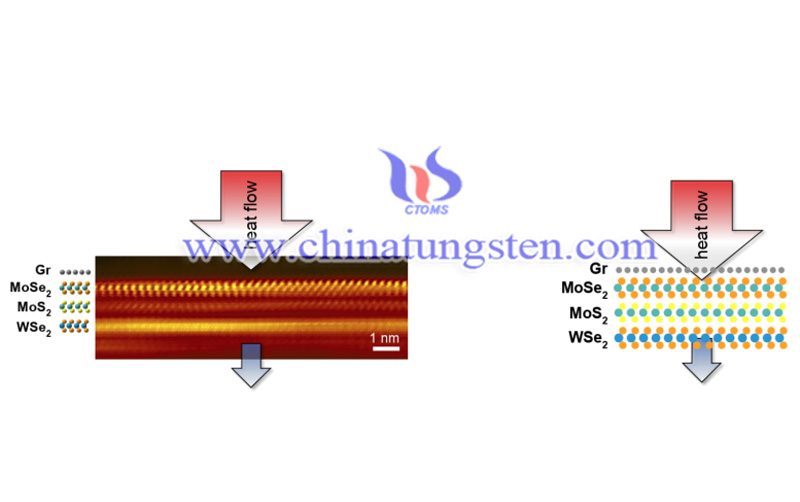MoS2, MoSe2, WSe2 and Graphene Stacked into 10-Atom-Thick Shield
- Details
- Category: Tungsten's News
- Published on Thursday, 05 September 2019 08:53
According to New Atlas reports, electrical engineers at Stanford University have developed a promising atomically-thin heat shield based on graphene stacked with MoS2, MoSe2 and WSe2, despite being 50,000 times thinner than a sheet of paper, it offers excellent thermal insulation.
The team draws inspiration from double-glazed windows and has been exploring the use of alternating ultra-thin materials as more compact insulation rather than a singular, solid mass of glass. Recent advances in materials science have made this an entirely realistic proposition.

A layer of single-atom graphene combined with sheets of other two-dimensional materials (MoS2, MoSe2 and WSe2), each measuring three atomic thicknesses, stacked together like a paper. The four-layer shield measures only 10 atoms thick as a whole, and when put to the test, proved rather effective at taking the heat.
The graphene layer on top as an ultra-thin electrical heater, and then measured how heat flows through the rest of the layers using a Raman laser. The laser power is low, so it does not introduce extra heating, but the laser returns a signal that is sensitive to the temperature of every material in the stack.
Scientists say the device provides the same level of insulation like a glass sheet 100 times thick when placed on a hot spot. this could have very useful implications in the pursuit of ever-thinner and more compact electronics, and while reproducing the material on a mass scale will have its challenges, the team sees a few possible pathways forward.

At the same time, scientists are also concerned about the long-term development of this technology. The heat within electronics is made of high-frequency, inaudible vibrations caused by collisions between moving electrons and the materials they encounter. Scientists hope to one day manipulate their energy as a way of controlling heat, an emerging field of science known as phononics.
Scientists believe that there are some fundamental reasons that this is either not currently possible or very hard. One of them is the requirement for a new type of thermal switch to achieve this efficient heat transfer, which would enable heat flow to be turned on and off. This is a problem that scientists are currently studying. The team's research was published in Science Advances.
Keeping the electronics cool is critical to keeping it running, but the components used to hold the heat may increase its overall size. The shield stacked of MoS2, MoSe2, WSe2 and graphene provides the same level of insulation like a glass plate having a thickness of 100 times. This is very useful for the pursuit of thinner and more compact electronic products.
- Tungsten Manufacturer & Supplier, Chinatungsten Online: www.chinatungsten.com
- Tungsten News & Prices of China Tungsten Industry Association: www.ctia.com.cn
- Molybdenum News & Price: news.molybdenum.com.cn
- Tel.: 86 592 5129696; Fax: 86 592 5129797; Email: sales@chinatungsten.com



 sales@chinatungsten.com
sales@chinatungsten.com